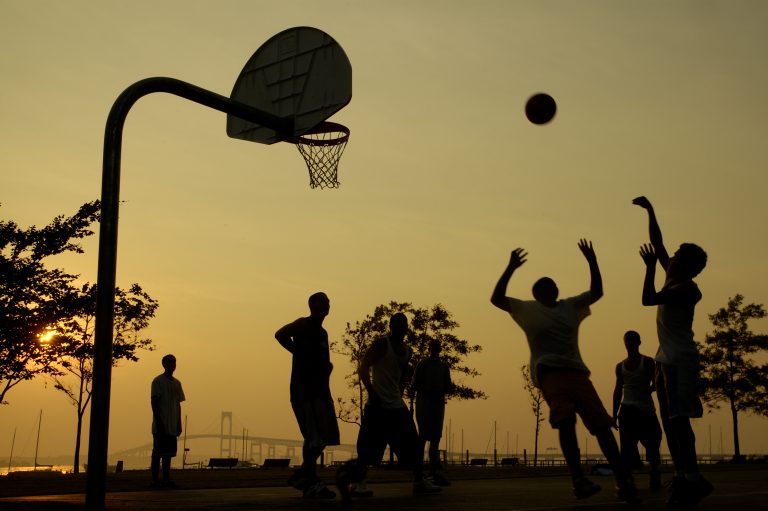Taking his talents to the Southern District of New York: Are LeBron James’ tattoos subject to copyright?
Published: September 19, 2017

With nearly 30% of Americans sporting at least one tattoo (up from 20% just four years ago), tattoos are becoming commonplace. This is even clearer among younger Americans, with nearly half of Millennials sporting ink. Today a majority of Americans report that they would feel comfortable seeing a person with visible tattoos in a range of industries and professions. Per the Harris Poll, “comfort ranges from highs of 86% for athletes, 81% for IT technicians and 78% for chefs, to lower majorities of 59% each for primary school teachers and judges, and even 58% for presidential candidates.” With growing acceptance, tattoos are also beginning to enter the world of fine art, with exhibitions and even TV shows displaying the breadth and talent of tattoo artists.
However, tattoo artists and patrons alike should be wary of the legal implications for their expressionistic choices. What happens when images, especially copyrighted ones, are inked on the human body? No US court has yet ruled that the copyright applies, despite several lawsuits resulting in settlements or dismissals. However, we may be about to receive a major ruling on the copyright of tattoos, thanks to LeBron James.
James has several tattoos, which have been displayed prominently on the court, in interviews, as well as in his promotional photos and videos for sponsorships like Nike. They are part of his “look” and the image he sells as part of the sponsorship.
They also appear in virtual representations of him, including in the video game NBA 2K16, which features lifelike simulations of NBA players, including many with clearly-visible tattoos.
But he has also sold the rights to some of his tattoos. Solid Oak Sketches, LLC acquired the right to certain of James’ tattoos (along with other NBA players), apparently for the specific purpose of bringing a lawsuit against the makers of NBA 2K16, per NBA 2K16’s recent Motion for Judgment on the Pleadings.
Solid Oak claims that James’ tattoos are protected by copyright law, which protects “original works of authorship fixed in any tangible medium of expression” that “is sufficiently permanent or stable to permit it to be perceived, reproduced, or otherwise communicated for a period of more than transitory duration.” 17 U.S.C. § 102. Solid Oak argues that the tattoos are a “fixed medium” and that any party seeking to show James’ tattoos must obtain consent from the rights holder – i.e. Solid Oak.
The makers of NBA 2K16 argue, on the other hand, that its use of James’ tattoos were de minimis, as they appear only briefly in the video game and at a high angle, making them hard to see. They further argue that any use of the tattoos is fair use, because the video game’s use is transformative and because James displays the tattoos regularly, including in televised games, sponsorship deals, and press events, without Solid Oak’s approval or acknowledgement of the copyright.
In a similar lawsuit involving Mike Tyson’s famous face tattoo, as displayed on one of the characters in the Hangover 2 movie, the well-known copyright legal scholar David Nimmer submitted a declaration arguing that tattoos are not subject to copyright. He reasoned that, if tattoos were copyrightable, the copyright holder would be able to, among other things, prohibit the tattooed individual from ever destroying the tattoo:
The tattoo qualifies as an original “work of visual art” that may gain “recognized stature,” with the result that a court may enjoin its destruction. See 17 U.S.C. § 106A(a)(3)(B). After a court invokes that provision to bar him from removing his tattoo, Mr. Tyson literally may not show his own face to the world; that is, he will be required to keep Mr. Whitmill’s handiwork spread across his face, regardless of his own desires. Copyright law thereby becomes the instrument to impose, almost literally, a badge of involuntary servitude, akin to the mark with which ranchers brand the cattle they own.
Nimmer also predicted the NBA 2K16 litigation, stating that any article that features Mr. Tyson’s face, network that broadcast Mr. Tyson’s fights, or filmmakers recording Mr. Tyson would violate the artist’s copyright. That lawsuit ended in settlement in 2011 however, leaving the issue unresolved.
The Court should rule on NBA 2K16 Motion for Judgment on the Pleadings shortly. In the meantime (and just in case the lawsuit does not result in a final determination of this issue), tattoo artists may want to consider more creative options for protecting their artistry while also allowing the vibrant community of artists and tattoo enthusiasts. Options include a tattoo registry, which would both protect against copycat tattoos and allow artists to protect their original works of art. See, e.g., Matthew Beasley, Who Owns Your Skin: Intellectual Property Law and Norms Among Tattoo Artists, 85 S. Cal. L. Rev. 1137 (2012). Per Beasley, this would comport with the established norms of the tattoo artist community, and would respect both the rights of the artist and the tattooed.
One thing is clear – in this unresolved area of law, both artists and those desiring a tattoo would be wise to consider these issues well in advance of walking into the tattoo shop.

